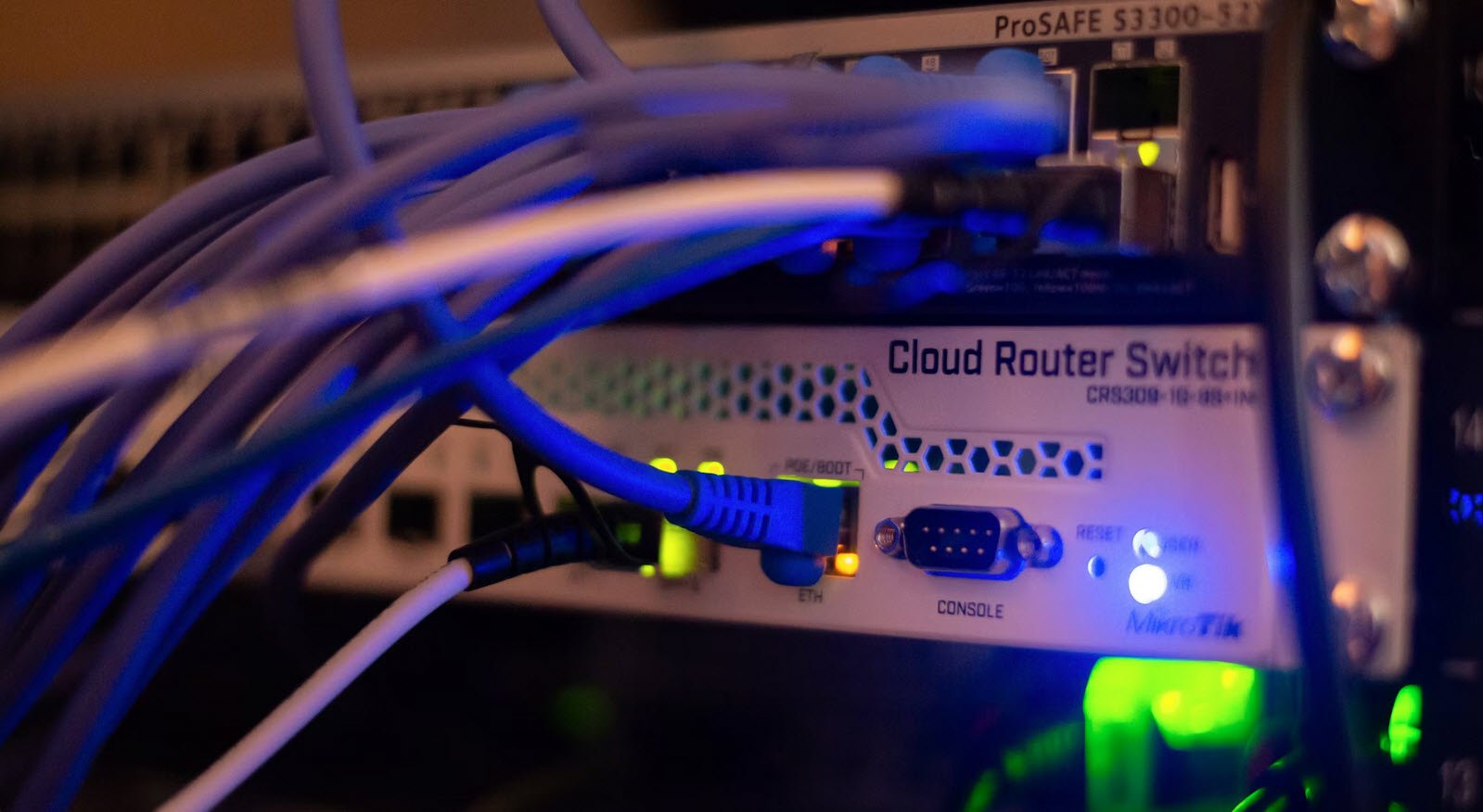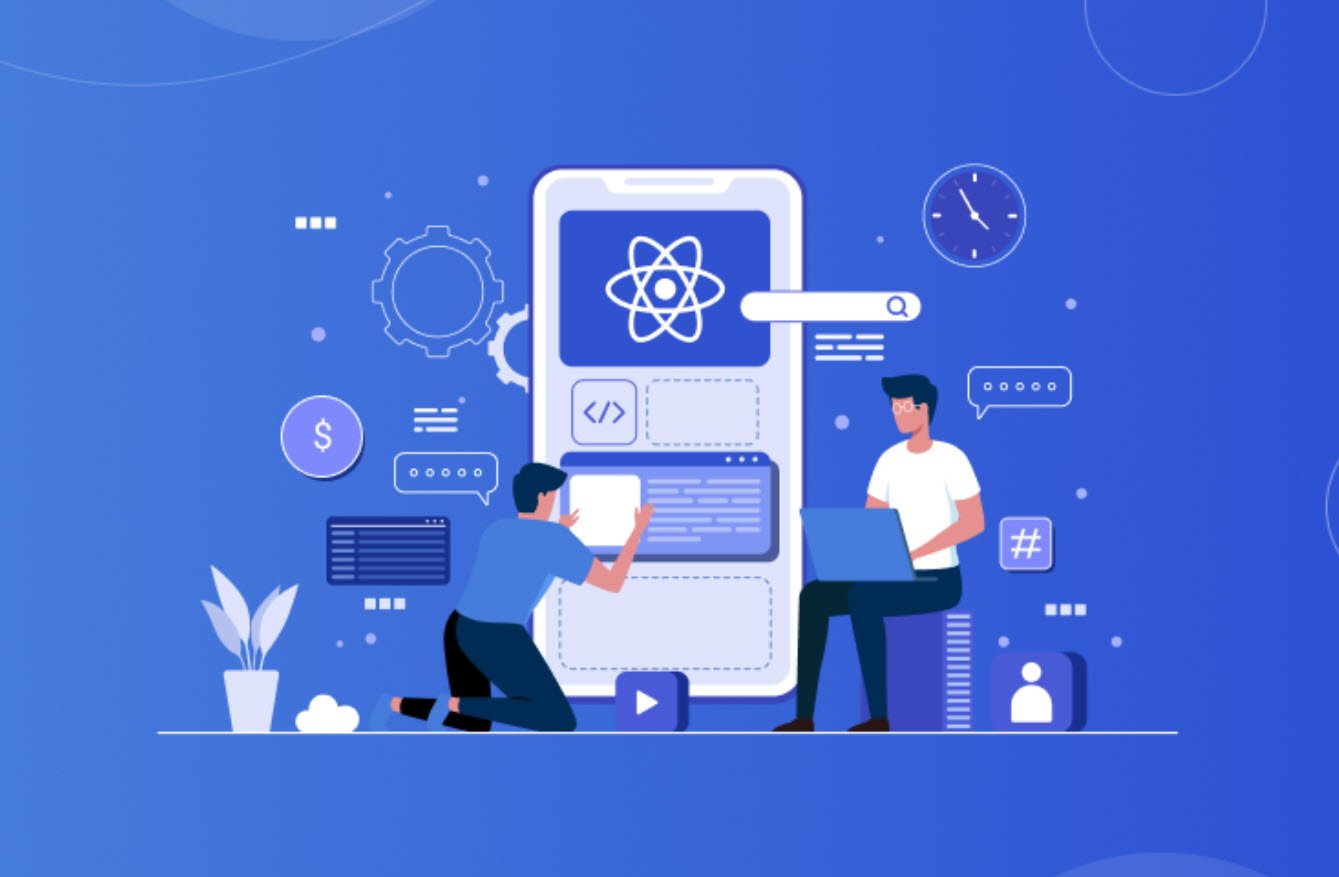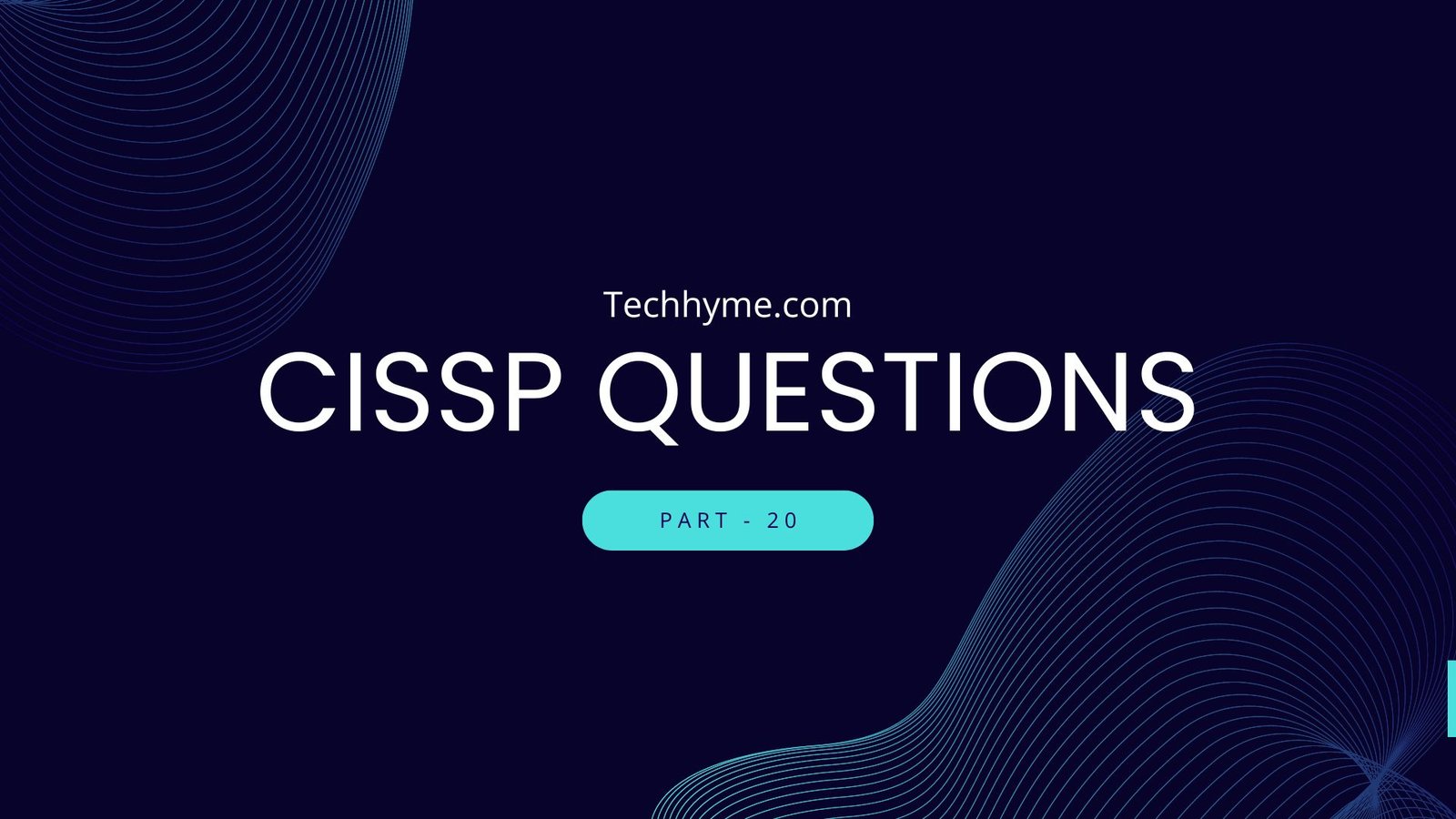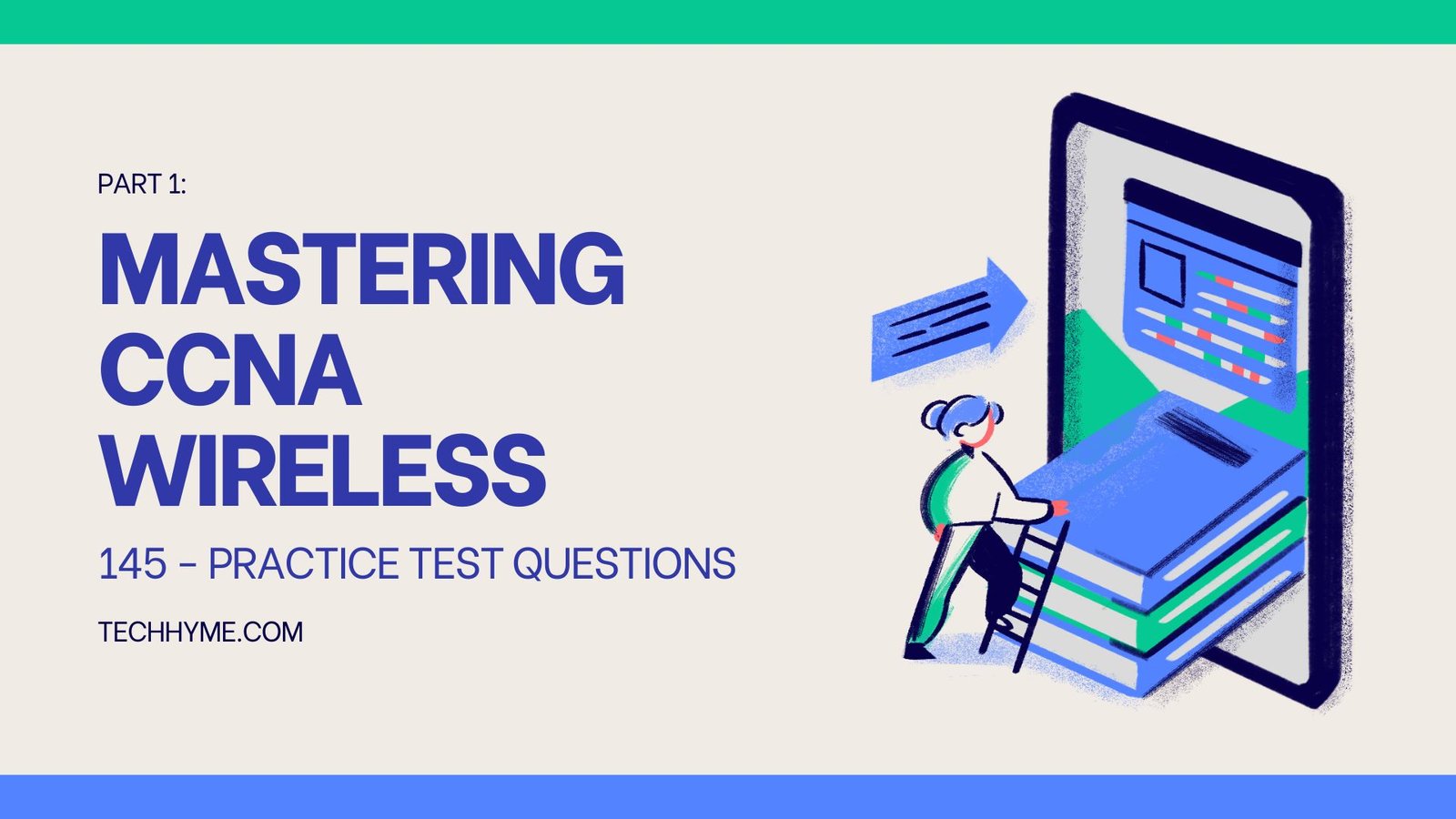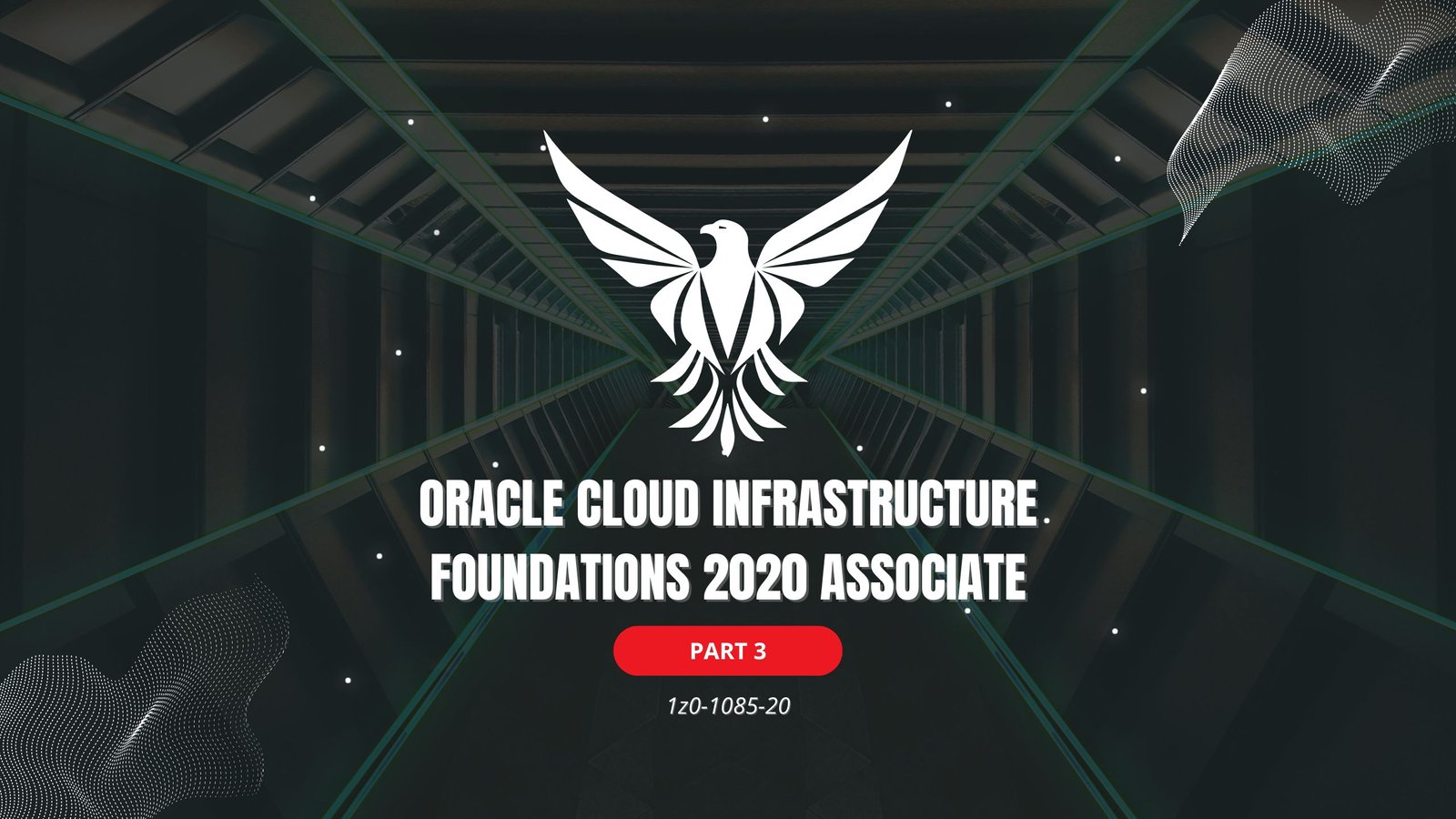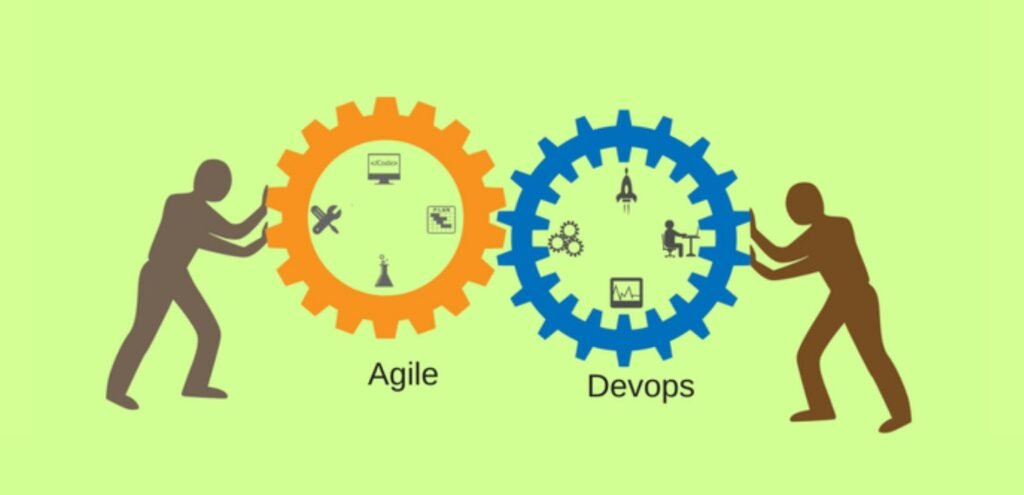
In today’s fast-paced and rapidly evolving software development landscape, two methodologies have gained immense popularity and prominence: Agile and DevOps. These methodologies have revolutionized the way software is designed, developed, tested, and deployed.
To help you better understand Agile and DevOps, we’ve compiled a list of multiple-choice questions with detailed answers.
1. A design principle to guide the selection of controls for an application to ensure its resilience against different forms of attack, and to reduce the probability of a single point of failure in the security of the system is called:
a) Defense in depth
b) Least privilege
c) Security by obscurity
d) Secure defaults
2. Poor Application Software Security is:
a) A network security problem
b) An operating system security problem
c) A software development and engineering problem
d) A user-caused problem
3. Giving a program the minimal authority to access resources is called:
a) Principle of Keep Security Simple
b) Principle of Least Privilege
c) Principle of Fail Securely
d) Principle of Defense in Depth
4. The paradigm of Building Security In begins with:
a) Analysis phase
b) Design phase
c) Specification phase
d) Development phase
5. Static code scanning should begin:
a) At build/continuous integration time
b) As soon as any code is produced
c) At unit testing time
d) At deployment time
6. Software security is most effective when it’s addressed in which SDLC activity?
a) Design sprint
b) Development sprint
c) Sprint planning
d) All Scrum activities
7. Shifting Left refers to:
a) Beginning security activities as early as possible in the SDLC
b) Focusing on security during the acceptance testing phase
c) Defining security requirements before application features are added to the Product Backlog
d) Addressing security requirements post–design phase activities
8. Effective appsec programs begin with an awareness track for everyone involved in software development to:
a) Provide context
b) Inform everyone about the program and roadmap
c) Provide common understanding and terminology
d) All of the above
9. The strategy for communication meant to overcome apathy to hazards that are significant is called:
a) Outrage management
b) Crisis communication
c) Precaution advocacy
d) Crisis management
10. Specialized appsec training should be stratified across:
a) User groups
b) Development team member role
c) Management group
d) Security champions
11. Anonymity is an aspect of what type of requirements?
a) Authentication requirement
b) Privacy requirement
c) Integrity requirement
d) Identification requirement
12. _____________ mandate the qualities of a system, describing how well the program should do what.
a) Security requirements
b) Nonfunctional requirements
c) Performance requirements
d) Functional requirements
13. The security activity in product backlog development is needed to do which of the following?
a) Map security and privacy needs as guardrails in user story acceptance criteria
b) Develop the software that implements security controls
c) Perform a risk analysis on the intended application
d) Perform peer reviews of the documentation
14. A design principle to guide the selection of controls for an application to ensure its resilience against different forms of attack, and to reduce the probability of a single point of failure in the security of the system is called:
a) Defense in depth
b) Least privilege
c) Security by obscurity
d) Secure defaults
15. Giving a program the minimal authority to access resources is called:
a) Principle of Keep Security Simple
b) Principle of Least Privilege
c) Principle of Fail Securely
d) Principle of Defense in Depth
16. The term that describes all possible entry points that an attacker can use to attack an application or system is called:
a) Security perimeter
b) Attack surface
c) Attack perimeter
d) Gateway
17. Security though obscurity refers to:
a) Hiding design details from development teams
b) Storing secrets in application code
c) Opaque functions
d) Reliance upon secrecy to reduce the chance that weaknesses may be detected and targeted.
18. Threats are identified using a process described by this mnemonic:
a) THREATEXPOSE
b) STRIDE
c) DREAD
d) CAPEC
19. Risk is calculated for each identified threat to prioritize findings and needs for remediation using which technique?
a) RISKCOMPUTE
b) DANGER
c) DREAD
d) THREATORDER
20. Benefits derived from threat modeling include all but which of the following?
a) Identifies threats and compliance requirements and evaluates their risk
b) Defines the need for required controls
c) Balances risks, controls, and usability
d) Guarantees that secure designs are sent for development
21. Cleaning up user’s input is called:
a) Validation
b) Sanitization
c) Normalization
d) Authentication
22. What is the attack technique used to exploit websites by altering backend database queries through inputting manipulated queries?
a) LDAP Injection
b) XML Injection
c) SQL Injection
d) OS Commanding
23. Which attack can execute scripts in the user’s browser and is capable of hijacking user sessions, defacing websites, or redirecting the user to malicious sites?
a) SQL Injection
b) Cross-site scripting (XSS)
c) Malware uploading
d) Man in the middle
24. What is the type of flaw that occurs when untrusted user-entered data is sent to the interpreter as part of a query or command?
a) Insecure Direct Object References
b) Injection
c) Cross Site Request Forgery
d) Insufficient Transport Layer Protection
25. Priority for remediating vulnerabilities should be determined by:
a) Time to fix
b) Complexity of the remediation work
c) Riskiness of leaving the defect untreated
d) Programmer ability to remediate the defect
26. Static code testing can expose all but which of the following?
a) Unvalidated/unsanitized variable used in data flow
b) Use of insecure functions
c) Vulnerable software libraries contained in the application
d) Logic flaws that affect business data
27. The alternative to remediating a defect is called:
a) Augmentation
b) Intensification
c) Mitigation
d) Avoidance
28. Pen testing tests helps an organization to do the following except:
a) Manage vulnerabilities
b) Avoid downtime
c) Preserve the corporation’s good reputation
d) Manage risks
29. Which of the statements below about penetration testing is incorrect?
a) It is an unintentional attack.
b) Pen testing is used for security assessment.
c) Pen testing improves the security of the system.
d) Pen testing discovers security weaknesses.
30. Which of the following are the potential benefits of using tools for testing?
i. Reducing the repetitive work
ii. Increasing consistency and repeatability
iii. Over-reliance on the tool
a) i and ii only
b) ii and iii only
c) i and iii only
d) All i, ii, and iii
31. Which of the following are the success factors for the deployment of the tool within an organization?
i. Assessing whether the benefits will be achieved at a reasonable cost
ii. Adapting and improving processes to fit with the use of the tool
iii. Defining the usage guidelines
a) i and ii only
b) ii and iii only
c) i and iii only
d) All i, ii, and iii
32. What is the latest approach to driving DevOps?
a) Removing much of the latency that has existed for years around software development through automation.
b) Embracing service-oriented architecture to overcome the interoperability and re usability challenges.
c) Embracing the waterfall model to meeting the needs of evolving business requirements.
d) Embracing structured development methodologies since software became larger and more complex.
33. Specify the correct order of The Three Ways:
a) Understand and increase the flow of work, Create a culture that fosters experimentation and learning, Create short feedback loops that enable continuous improvement.
b) Create a culture that fosters experimentation and learning, Understand and increase the flow of work, Create short feedback loops that enable continuous improvement.
c) Understand and increase the flow of work, Create short feedback loops that enable continuous improvement, Create a culture that fosters experimentation and learning.
34. Benefits of a successful implementation of DevSecOps include which of the following:
a) Increased level of automation
b) Accelerated pace of interactions between the development and operations teams
c) Streamlining of processes
d) All the above
35. Which one of the following statements about DevSecOps is incorrect?
a) DevSecOps is only suitable for start-up companies.
b) DevSecOps is suitable for Brownfield software products and services.
c) DevSecOps is suitable for Greenfield software products and services.
d) Some of the most exemplary DevSecOps initiatives started in companies with giant and mature IT organizations.
36. The four core activities of Governance, Construction, Verification, and Deployment are described by:
a) BSIMM
b) CWE
c) OWASP
d) OpenSAMM
37. The Maturity Model you select for your own organization makes no difference so long as your measurement system is:
a) Repeatable
b) Actionable
c) Consistent
d) All the above
38. Which of the following is not characteristic of good security metrics?
a) Quantitatively expressed
b) Objectively expressed
c) Contextually relevant
d) Collected manually
39. When a company wishes to experiment with new technology to determine suitability for widespread use, in which environment should the testing be conducted?
a) Production
b) Sandboxed inside of development
c) QA
d) Development
40. Which of these is the most logical first step in an API development project?
a) Create a functional view of the related application
b) Put API usage monitoring in place
c) Choose either an API proxy or an API gateway
d) None of the above
41. The modern standard that makes the use of application containers during runtime possible is called:
a) Transporter
b) Docker
c) Loader
d) Executor
42. Bitcoin is an example implementation of:
a) Blocklinks
b) Chains of trust
c) Automated hierarchies
d) Blockchains
43. Benefits of preparing for CSSLP certification include all but which of the following:
a) Gauges an individual’s or development team’s competency in the field of application security
b) Provides a valuable blueprint to install or evaluate a security plan in the SDLC
c) Demonstrates commitment to the practice of software security
d) Increases the likelihood of gaining an interview for a secure SDLC position
44. OWASP Flagship project designation is given to projects that have demonstrated strategic value to OWASP and the application security community as a whole.
a) False
b) True
45. Demand for appsec practitioners has been dramatically increasing annually, and in 2021, the projected 5-year growth is estimated to be:
a) 164%
b) 95%
c) 110%
d) 2,000%
- 80 Most Important Network Fundamentals Questions With Answers
- 100 Most Important SOC Analyst Interview Questions
- Top 40 Cyber Security Questions and Answers
- Top 10 React JS Interview Theory Questions and Answers
- CISSP – Practice Test Questions – 2024 – Set 20 (53 Questions)
- Part 2: Exploring Deeper into CCNA – Wireless (145 Practice Test Questions)
- Part 1: Mastering CCNA – Wireless (145 Practice Test Questions)
- [1z0-1085-20] Oracle Cloud Infrastructure Foundations 2020 Associate MCQ Questions – Part 3
- [1z0-1085-20] Oracle Cloud Infrastructure Foundations 2020 Associate MCQ Questions – Part 2
- [1z0-1085-20] Oracle Cloud Infrastructure Foundations 2020 Associate MCQ Questions – Part 1

